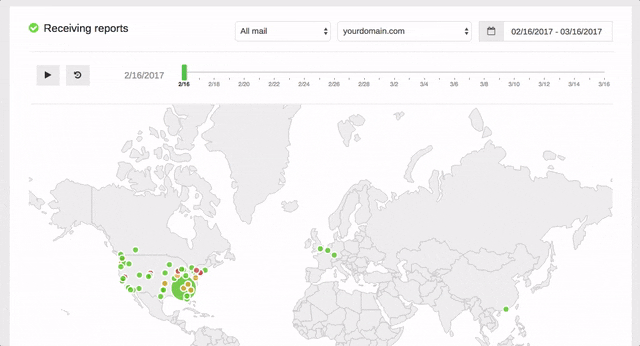As you probably know if you read this blog, part of our expertise revolves around email deliverability. On the agency side, this expertise takes the form of deliverability audits, but also of deliverability monitoring. When an economic activity is strongly dependent on sales generated by email campaigns, this monitoring is essential in order to detect any incident or variation in deliverability as soon as possible.
In order to offer our monitoring services, we have so far chosen to work in partnership with an American company called 250OK (you know, it's that SMTP code that says that your emails have been successfully delivered). The advantage of this partnership is that we are very close to 250OK, which allows us to act as intermediaries between our customers and the solution (advice, support, demos, ...). 250OK also has a policy of evolution and very frequent updates of its tools. Here is a small selection of the new products delivered in the last few months:
Inbox Monitoring: Where do your emails arrive?
About the module Inbox monitoring allows you to check in which box your emails land. Is it in the inbox, in the spam box or are your emails "lost"? This module also allows you to know in which box your emails arrive on Gmail and to make a large number of automatic checks on the quality of the delivery of your campaigns.

What's New: Community ISP Health Dashboard
This dashboard allows you to see the averages and trends of each ISP/Webmail based on what all the users of the deliverability monitoring platform observe. This way, if your deliverability level drops on an ISP or a webmail, you can check if it is a global trend or if it is related to your activity.
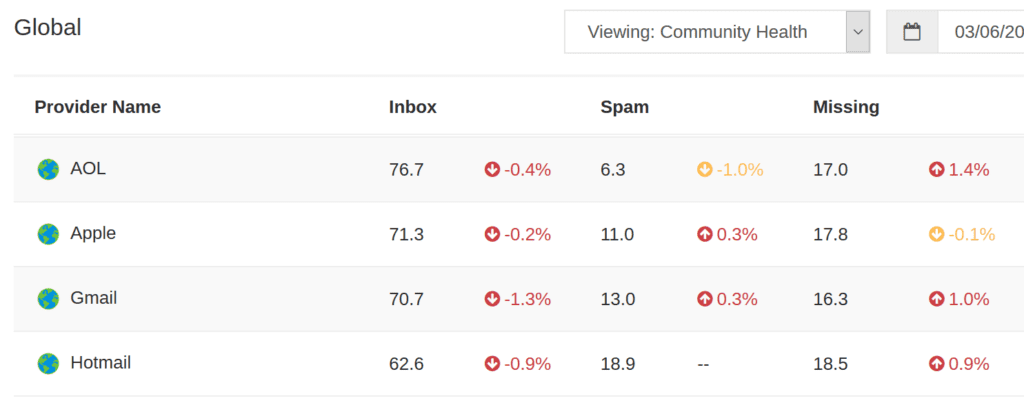
Reputation Monitoring: How are your emails perceived?
About the module Reputation monitoring allows you to have a view of the perception of your messages by the various actors in the anti-spam chain. This means the detection of blacklisting of your IP addresses and domains, the monitoring of spamtraps that you touch, the analysis of feedback loops (spam complaints), the detection of phishing concerns as well as the analysis of your reputation with certain webmails and ISPs.
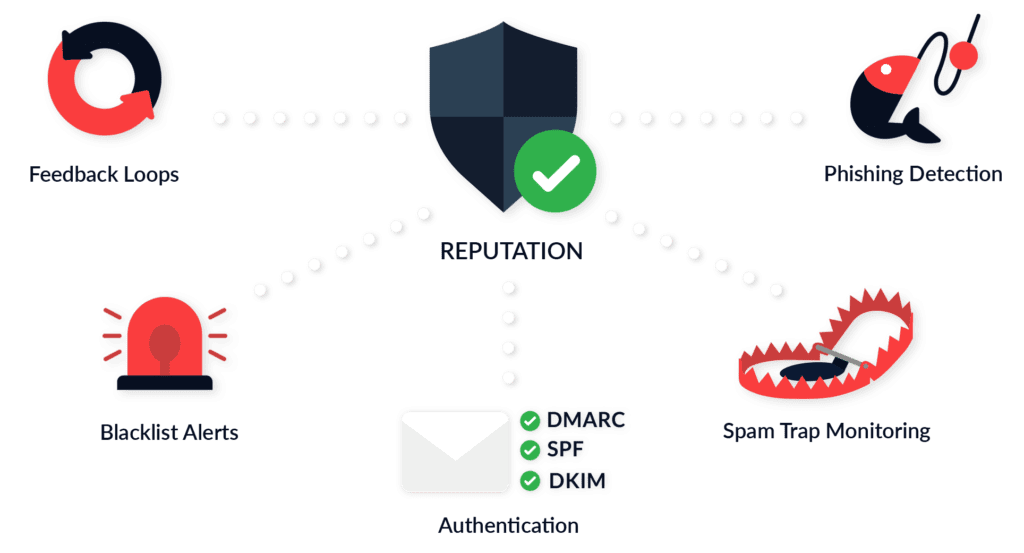
New: Signal Spam Dashboard
The monitoring platform already allowed to explore reputation data from Microsoft's SNDS, now it is the data from Signal Spam that is integrated. This makes it possible to monitor the level of spam complaints per day, per ISP (Orange, SFR and La Poste) and per IP address. All the information collected can then be used to generate automated and customized alerts.
Need help?
Reading content isn't everything. The best way is to talk to us.
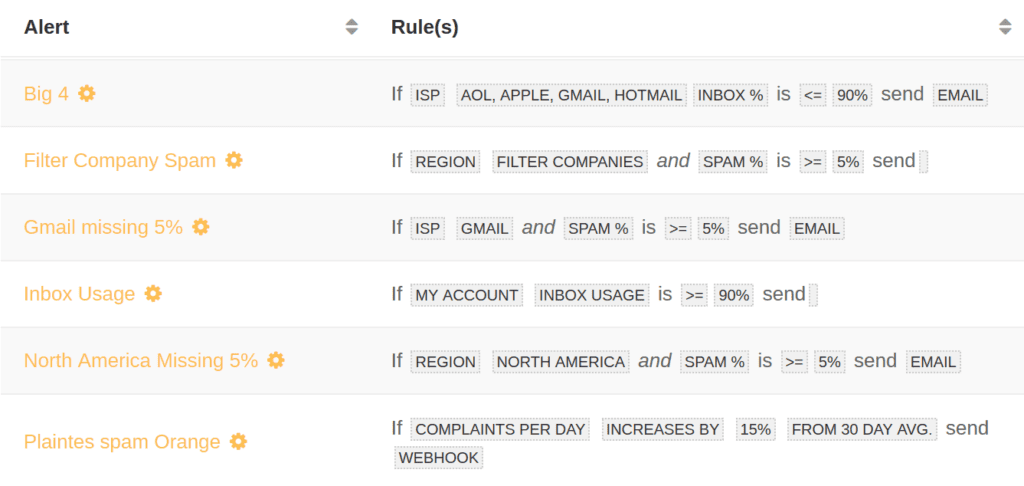
Analytics: Opener behavioral analysis
About the module For several years, deliverability has been strongly influenced by the (positive) reactivity of your email recipients. It is therefore essential to be able to follow the behavior of your openers, to understand from which messengers they open your emails, what is the type of opening, ... to cross-check this information with the segment, the campaign typology, ... and lots of other information.
New: Automatic integration with your campaign management platform
By default, it is now possible to integrate the tracking codes of the Analytics module in Mailgin, Sparkpost and Sendgrid. Via an API, it is also possible to bring down the figures of your campaigns in the Analytics module in order to have at your disposal the opening rates and many other information. This allows you to have a view of the performance directly in the monitoring tool and to generate alerts, for example if the opening rates in Gmail lose some feathers. This integration also allows you to feed the segments of your campaign management solution, for example with the activity rates of some of your leads.
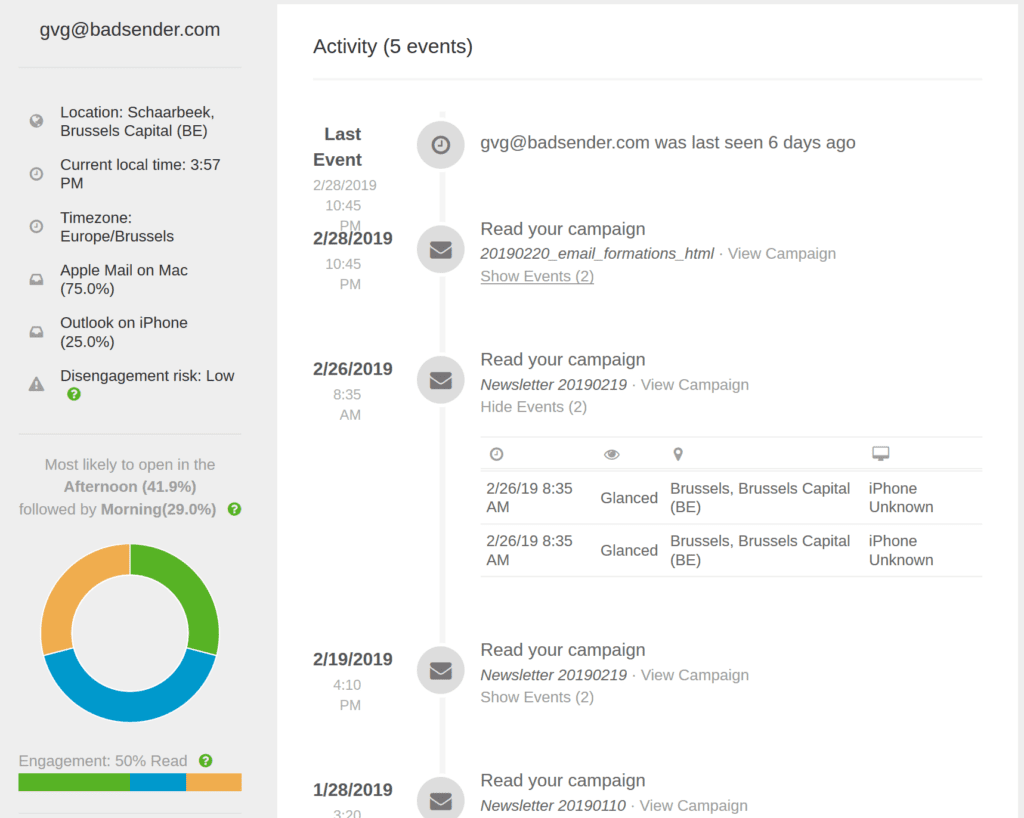
DMARC: Verification of the authenticity of emails sent with your domains
About the module : DMARC is a technology module allows you to be alerted if a message does not comply with DKIM and SPF standards (which authenticate the sender of a message) and to tell ISPs and Webmails what to do with these messages. The DMARC module therefore enables you to monitor e-mail traffic using your domain, to check that it is only being used by legitimate servers and that you are not the victim of identity theft.
What's new: New filters and threat map
Several new filters have been added to the DMARC monitoring module, allowing you to further refine the analysis of DMARC returns. A map is also now available to check which geographical zones (and which servers) generate the most DMARC alerts.
